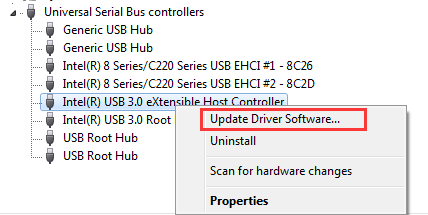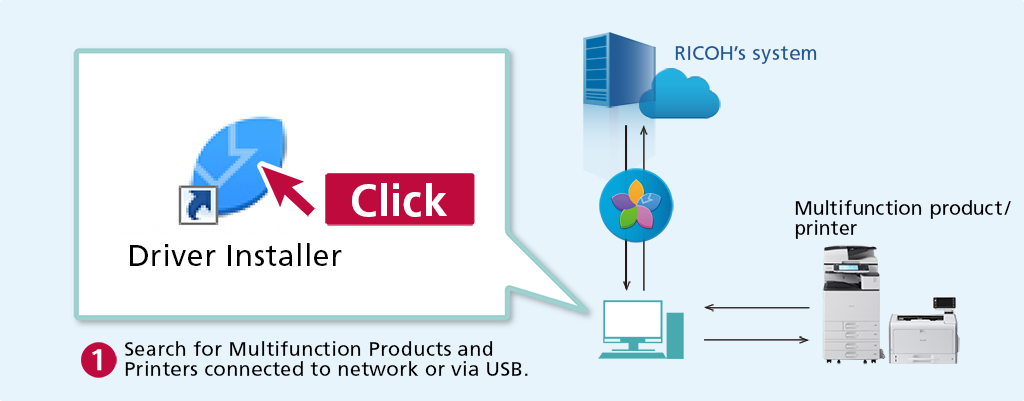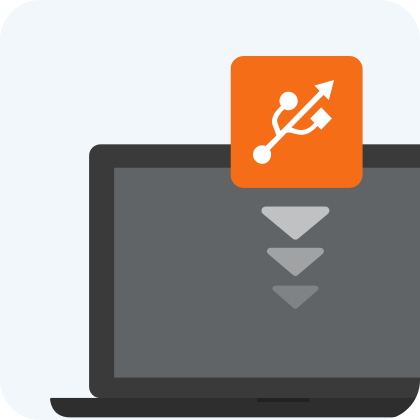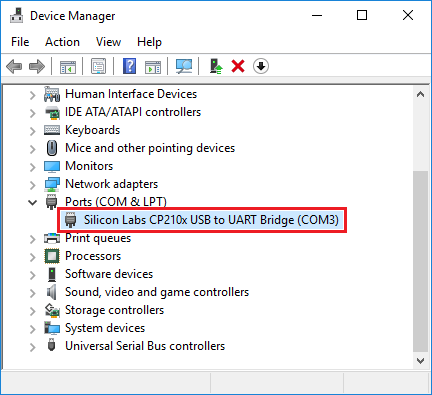Intel® Wireless Bluetooth® Driver for Windows® 10 64-Bit for Intel® NUC Version: 21.120.0 (Latest) Date: 9/30/2020. The terms of the software license agreement included with any software you download will control your use of the software. I accept the terms in the license agreement. I do not accept the terms in the license agreement. Universal remote control, supports the following devices: - Panasonic - Sharp - Dreambox - Samsung - Onkyo - Integra - LG Electronic - Denon - Marantz After select your device in the Setting Menu you can switch between devices using the swipe gesture. The application is designed for adding additional devices as required.
- Universal Remote Control Usb Devices Driver Download For Windows 10 Xp
- Universal Remote Control Usb Devices Driver Download For Windows 10 64-bit
- Universal Remote Control Usb Devices Driver Download For Windows 10 Windows 7
Designed for those who want a one-stop upgrade for your USB 3.0 laptop. The Plugable USB 3.0 Universal Laptop Docking Station for Windows and Mac (UD-3900) allows you to add dual monitors, and connect your peripherals, all through a single cable back to your laptop. Quickly come and go from your desk with ease. From the description you have provided, I understand that you are facing issues with the remote control in Windows 7. I would suggest you to try the following steps 1. Click on Start; in the start search type devmgmt.msc and hit Enter. Uninstall the device driver. Unplug the USB cord and reboot. Windows 10 Logitech has recently updated the driver for the Harmony 900 and H1000/1100 to be compatible with Windows 10. Try the following instructions as per Logitech: Download the Logitech Remotes Software App (7.7.1) from here. Run the “LogitechHarmonyRemote7.7.1-WIN-x86.exe” file.
-->This topic describes best practices about implementing the remote wakeup capability in a client driver.
USB devices that can respond to external wake signals while suspended are said to have a remote wakeup capability. Examples of devices that have a remote wakeup capability are mice, keyboards, USB hubs, modems (wake on ring), NICs, wake on cable insertion. All of these devices are capable of producing remote wake signaling. Devices that are not capable of generating remote wake signaling include video cameras, mass storage devices, audio devices, and printers.
Drivers for devices that support remote wakeup signaling must issue an IRP_MN_WAIT_WAKE IRP, also known as a wait wake IRP, to arm the device for remote wakeup. The wait wake mechanism is described in the section Supporting Devices That Have Wake-Up Capabilities.
When Does the System Enable Remote Wakeup on a USB Leaf Device?
In USB terminology, a USB device is enabled for remote wakeup when its DEVICE_REMOTE_WAKEUP feature is set. The USB specification specifies that host software must set the remote wakeup feature on a device 'only just prior' to putting the device to sleep.
Universal Remote Control Usb Devices Driver Download For Windows 10 Xp
For this reason, the USB stack does not set the DEVICE_REMOTE_WAKEUP feature on a device after receiving a wait wake IRP for the device. Instead, it waits until it receives a IRP_MN_SET_POWER request to change the WDM device state of the device to D1/D2. Under most circumstances, when the USB stack receives this request, it both sets the remote wakeup feature on the device and puts the device to sleep by suspending the device's upstream port. When you design and debug your driver, you should keep in mind that there is a loose relationship between arming a USB device for wakeup in software, by means of a wait wake IRP, and arming the device for wakeup in hardware by setting the remote wakeup feature.
The USB stack does not enable the device for remote wakeup when it receives a request to change the device to a sleep state of D3, because according to the WDM power model, devices in D3 cannot wake the system.
Why Does Attaching or Detaching My Device Produce a Different Wakeup Behavior in Windows XP and Windows Vista and later versions of Windows?
Universal Remote Control Usb Devices Driver Download For Windows 10 64-bit

Another unique aspect of the USB implementation of the WDM power mode regards the arming of USB hubs for remote wakeup. In Microsoft Windows XP all hub devices between host controller and the USB device are armed for wakeup whenever the USB device is armed for wakeup. This produces the surprising consequence that when sleeping devices are detached they will wake up the system.
In Windows Vista and later versions of Windows, if a USB leaf device on the bus is armed for wake, the USB stack will also arm the USB host controller for wake, but it will not necessarily arm any of the USB hubs upstream of the device. The USB hub driver arms a hub for remote wakeup only if the USB stack is configured to wake up the system on attach and detach (plug/unplug) events.

Note UHCI (Universal Host Controller Interface) USB host controllers do not distinguish between remote wake signaling and connect change events on root hub ports. This means the system will always wake from a low system power state if a USB device is connected to or disconnected from a root hub port, if there is at least one device behind the UHCI controller that is armed for wake.
Related topics
-->Universal Serial Bus (USB) provides an expandable, hot-pluggable Plug and Play serial interface that ensures a standard, low-cost connection for peripheral devices such as keyboards, mice, joysticks, printers, scanners, storage devices, modems, and video conferencing cameras. Migration to USB is recommended for all peripheral devices that use legacy ports such as PS/2, serial, and parallel ports.

Universal Remote Control Usb Devices Driver Download For Windows 10 Windows 7
The USB-IF is a Special Interest Groups (SIGs) that maintains the Official USB Specification, test specifications and tools.
Windows operating systems include native support for USB host controllers, hubs, and devices and systems that comply with the official USB specification. Windows also provides programming interfaces that you can use to develop device drivers and applications that communicate with a USB device.

| USB in WindowsWindows 10: What's new for USB Overview of new features and improvements in USB in Windows 10. USB FAQFrequently asked questions from driver developers about the USB stack and features that are supported in USB. Microsoft OS Descriptors for USB DevicesWindows defines MS OS descriptors that allows better enumeration when connected to system running Windows operating system Microsoft-provided USB driversUSB device-side drivers in WindowsA set of drivers for handling common function logic for USB devices. USB host-side drivers in WindowsMicrosoft provides a core stack of drivers that interoperate with devices that are connected to EHCI and xHCI controllers. USB-IF device class driversWindows provides in-box device class drivers for many USB-IF approved device classes, audio, mass storage, and so on. USB generic function driver–WinUSBWindows provides Winusb.sys that can be loaded as a function driver for a custom device and a function of a composite device. USB generic parent driver for composite devices–UsbccgpParent driver for USB devices with multiple functions. Usbccgp creates physical device objects (PDOs) for each of those functions. Those individual PDOs are managed by their respective USB function drivers, which could be the Winusb.sys driver or a USB device class driver. WDF extension for developing USB drivers
Get information about the tools that you can use to test your USB hardware or software, capture traces of operations and other system events, and observe how the USB driver stack responds to a request sent by a client driver or an application. Read an overview of tests in the Hardware Certification Kit that enable hardware vendors and device manufacturers to prepare their USB devices and host controllers for Windows Hardware Certification submission. Other Resources for USB Official USB SpecificationProvides complete technical details for the USB protocol. Microsoft Windows USB Core Team BlogCheck out posts written by the Microsoft USB Team. The blog focuses on the Windows USB driver stack that works with various USB Host controllers and USB hubs found in Windows PC. A useful resource for USB client driver developers and USB hardware designers understand the driver stack implementation, resolve common issues, and explain how to use tools for gathering traces and log files. OSR Online Lists - ntdevDiscussion list managed by OSR Online for kernel-mode driver developers. Windows Dev-Center for Hardware DevelopmentMiscellaneous resources based on frequently asked questions from developers who are new to developing USB devices and drivers that work with Windows operating systems. USB-related videos UWP apps for USB devicesUnderstanding USB 3.0 in Windows 8Building great USB 3.0 devicesUSB Debugging Innovations in Windows 8 (Part I, II, & III)USB hardware for learning MUTT devicesMUTT and SuperMUTT devices and the accompanying software package are integrated into the HCK suite of USB tests. They provide automated testing that can be used during the development cycle of USB controllers, devices and systems, especially stress testing. OSR USB FX2 Learning KitIf you are new to USB driver development. The kit is the most suitable to study USB samples included in this documentation set. You can get the learning kit from OSR Online Store. | Write a USB client driver (KMDF, UMDF) Introduces you to USB driver development. Provides information about choosing the most appropriate model for providing a USB driver for your device. This section also includes tutorials about writing your first user-mode and kernel-mode USB drivers by using the USB templates included with Microsoft Visual Studio. Write a USB host controller driverIf you are developing an xHCI host controller that is not compliant with the specification or developing a custom non-xHCI hardware (such as a virtual host controller), you can write a host controller driver that communicates with UCX. For example, consider a wireless dock that supports USB devices. The PC communicates with USB devices through the wireless dock by using USB over TCP as a transport.
You can develop a controller driver that handles all USB data transfers and commands sent by the host to the device. This driver communicates with the Microsoft-provided USB function controller extension (UFX). USB function class extension (UFX) reference Write a USB Type-C connector driverWindows 10 introduces support for the new USB connector: USB Type-C. You can write a driver for the connector that communicates with the Microsoft-provided class extension module: UcmCx to handle scenarios related to Type-C connectors such as, which ports support Type-C, which ports support power delivery. USB connector manager class extension (UcmCx) reference Write a USB dual-role controller driverUSB Dual Role controllers are now supported in Windows 10. Windows includes in-box client drivers for ChipIdea and Synopsys controllers. For other controllers, Microsoft provides a set of programming interfaces that allow the dual-role class extension (UrsCx) and its client driver to communicate with each other to handle the role-switching capability of a dual-role controller. For more information about this feature, see: USB dual-role controller driver programming reference Write a USB driver for emulated devicesWindows 10 introduces support for emulated devices. Now you can develop an emulated Universal Serial Bus (USB) host controller driver and a connected virtual USB device. Both components are combined into a single KMDF driver that communicates with the Microsoft-provided USB device emulation class extension (UdeCx). Emulated USB host controller driver programming reference Write a UWP appProvides step-by-step instructions about implementing USB features in a UWP app. To write such an app for a USB device you need Visual Studio and Microsoft Windows Software Development Kit (SDK) . Write a Windows desktop appDescribes how an application can call WinUSB Functions to communicate with a USB device. WinUSB functions Common programming scenariosList of common tasks that a driver or an app performs in order to communicate with a USB device. Get quick info about the programming interfaces you need for each task. USB samples Development tools Download kits and tools for Windows |
